Invented by Jennifer Leah Gori, Editas Medicine Inc
Crispr/Cas9 is a gene-editing tool that utilizes a protein called Cas9 and a guide RNA molecule to target specific genes and make precise changes to their DNA sequence. This technology has opened up new possibilities for treating genetic disorders, as it allows scientists to correct or modify faulty genes that cause diseases.
In the field of stem cell research, Crispr/Cas9 has become an invaluable tool. Stem cells have the unique ability to differentiate into various cell types in the body, making them a promising source for regenerative medicine and tissue engineering. By using Crispr/Cas9, scientists can edit the genes of stem cells to enhance their therapeutic potential or correct genetic defects before using them for transplantation.
The market for Optimized Crispr/Cas9 systems and methods of gene editing in stem cell research is driven by the increasing demand for effective and safe gene therapies. Genetic diseases affect millions of people worldwide, and traditional treatment options are often limited. Crispr/Cas9 offers a promising solution by directly targeting the underlying genetic cause of these diseases.
Several companies have emerged in recent years to capitalize on the growing market for Optimized Crispr/Cas9 systems. These companies provide researchers with optimized gene-editing tools, such as Cas9 proteins with improved efficiency and specificity, as well as guide RNA molecules that can accurately target specific genes. These advancements have made gene editing in stem cells more efficient and reliable, accelerating the pace of research and development in this field.
In addition to the market for Optimized Crispr/Cas9 systems, there is also a growing demand for methods of gene editing in stem cell research. Scientists are constantly developing new techniques and protocols to improve the efficiency and safety of gene editing in stem cells. These methods include the use of viral vectors, nanoparticles, and electroporation to deliver the Crispr/Cas9 components into the cells. Companies that provide these innovative methods are also thriving in the market.
However, the market for Optimized Crispr/Cas9 systems and methods of gene editing in stem cell research is not without challenges. One major concern is the off-target effects of gene editing, where unintended changes are made to the DNA sequence. Researchers are actively working on improving the specificity of Crispr/Cas9 to minimize these off-target effects. Additionally, ethical considerations surrounding gene editing, particularly in human embryos, pose regulatory challenges that need to be addressed.
Despite these challenges, the market for Optimized Crispr/Cas9 systems and methods of gene editing in stem cell research is expected to continue growing in the coming years. The potential of this technology to revolutionize medicine and provide new treatments for genetic diseases is driving both scientific research and commercial interest. As advancements in gene editing techniques and safety measures continue to be made, the market will likely expand further, paving the way for a new era of personalized medicine and regenerative therapies.
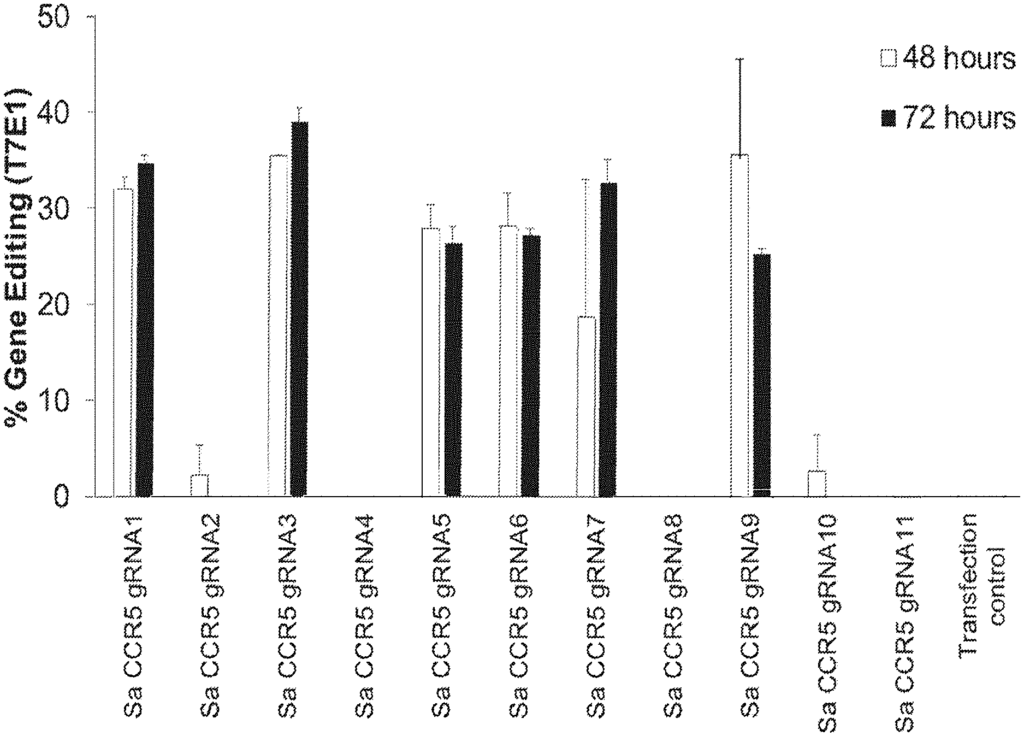
The Editas Medicine Inc invention works as follows
The methods and compositions described in this document increase CRISPR/Cas gene editing by stem cells by transiently contacting them with CRISPR/Cas9 before and/or following contact. This treatment results in an increased engraftment rate of stem cells into a target tissue. The present disclosure also includes one or more modified CRISPR/Cas9 component which, when combined with the stem-cell viability enhancer increases gene editing frequency in stem cells and increases stem-cell viability.
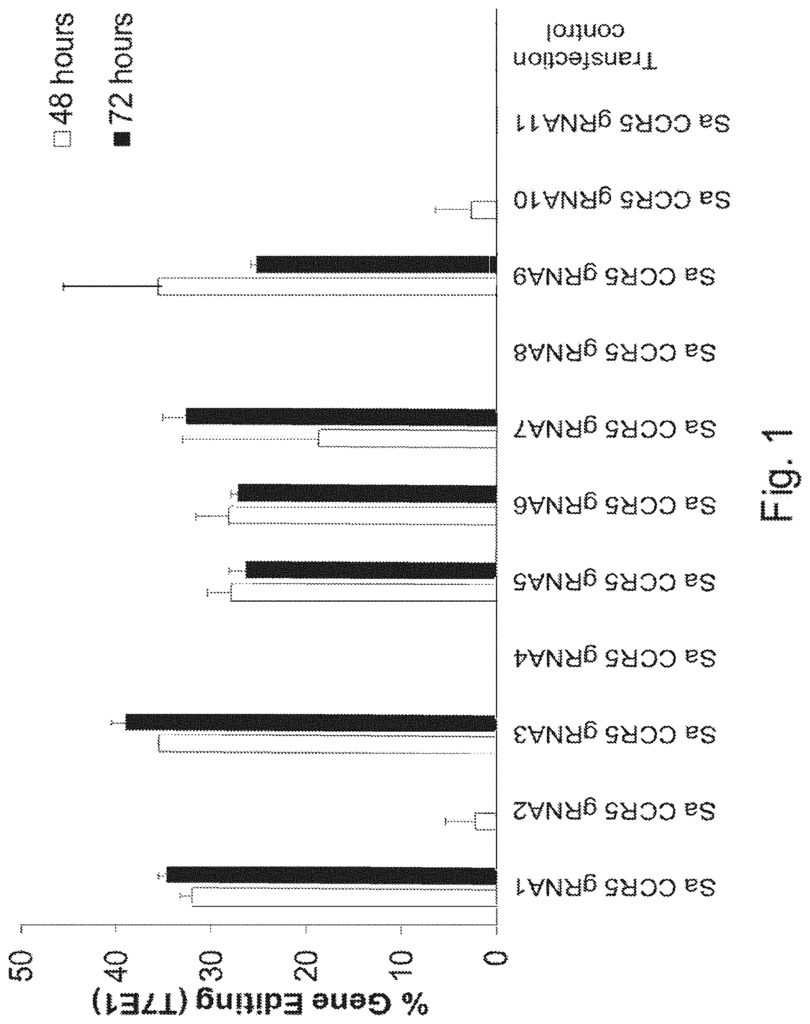
Background for Optimized Crispr/Cas9 systems and methods of gene editing in stem cell
Definitions
I. Optimization Stem Cells
IV. Cas9 Molecules
V. Functional Analysis Of Candidate Molecules
VI. “VI.
Homology Arms Template for Donors
VII. Stem Cells
VIII. “VIII.
Ex Vivo Delivery
IX. “IX.
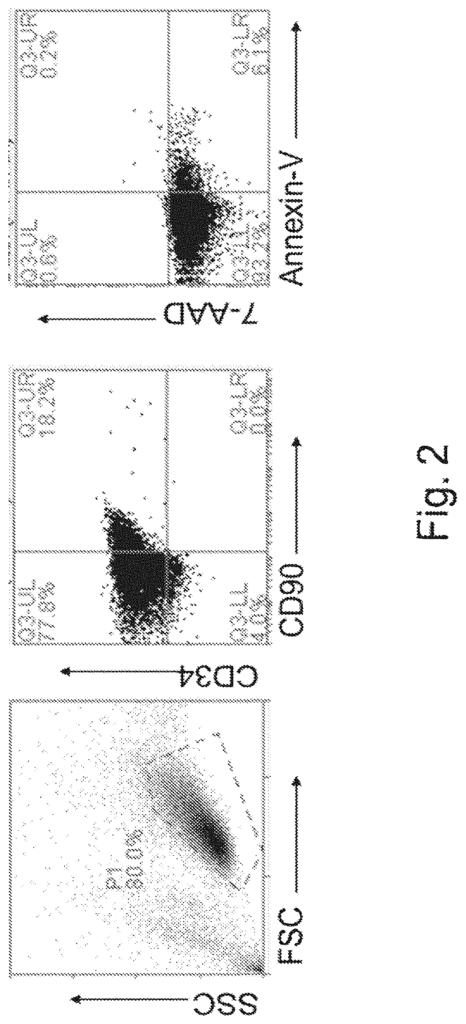
EXAMPLES
Example 1 : Cloning of gRNAs and Initial Screening
Example 2 : Assessment of Gene Targeting By NHEJ
Example 3 : Assessment of Gene targeting by HDR
Example 4″: Testing S. Aureus Cas9-gRNAs targeted to the CCR5 locus
Example 6: The Effect of Cytokines on Human Mobilized Peripheral CD34+ HSCs at the CCR5 Genomic Locus”.
Example 6 – Contact between Cytokines, Small Molecules Cell Viability Enhancer, UM171, and Human Mobilized Peripheral blood CD34+ stem cells Improved Cell viability, survival, and genome editing at the CXCR4 genomic locus
Example 7 : Contact between Cytokines, Small Molecules Cell Viability Enhancer, UM171, and Human Mobilized Peripheral blood CD34+ stem cells Improved Cell viability, survival, and genome editing at the CXCR4- and CCR5- Genomic loci after Multiplexing gRNAs”.
Example 8″: Modification of gRNA through Addition of 5? “Example 8: Modification of gRNA by Addition of 5? “Poly-A tail increases genome editing at target genetic loci and improves CD34+ cell viability and survival
Example 9. Contact between S. pyogenes Ribonucleoprotein complexed with gRNAs targeting the HBB genetic locus supports gene editing in adult human hematopoietic stem cells
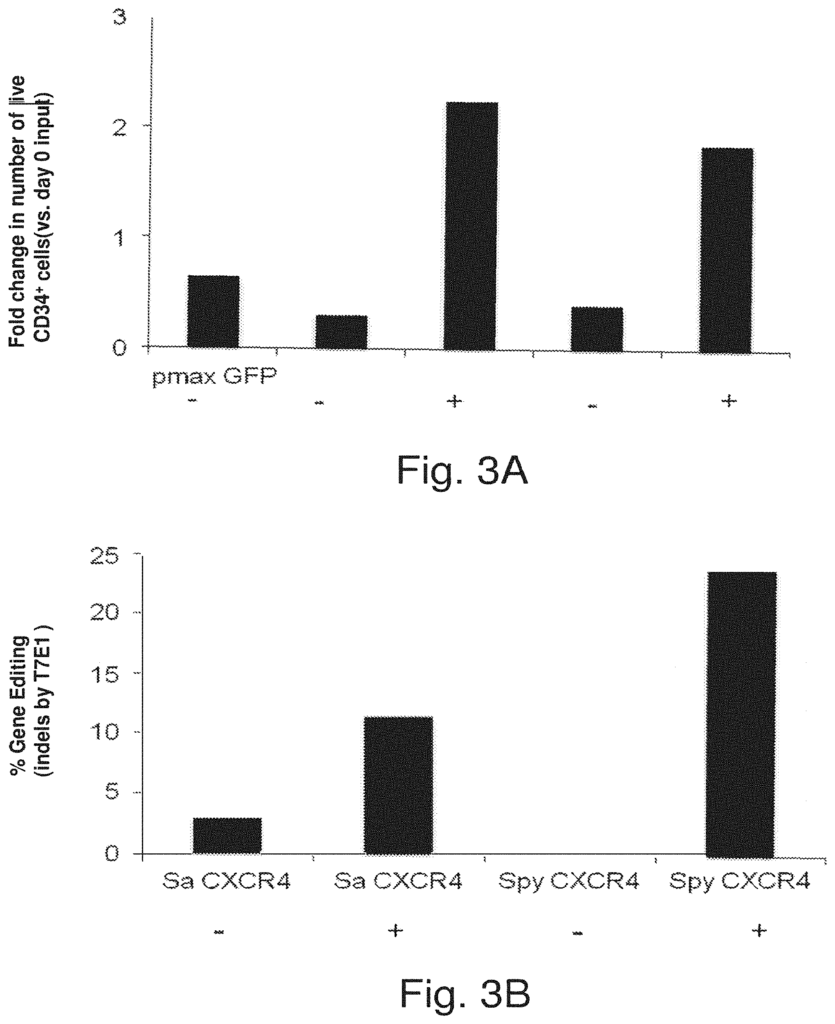
Example 10″: “Contact between S. pyogenes Cas9 Ribonucleoprotein complexed with gRNAs targeting the HBB genetic locus supports gene editing in fresh umbilical cord blood derived human CD34+ hematopoietic stem cells”.
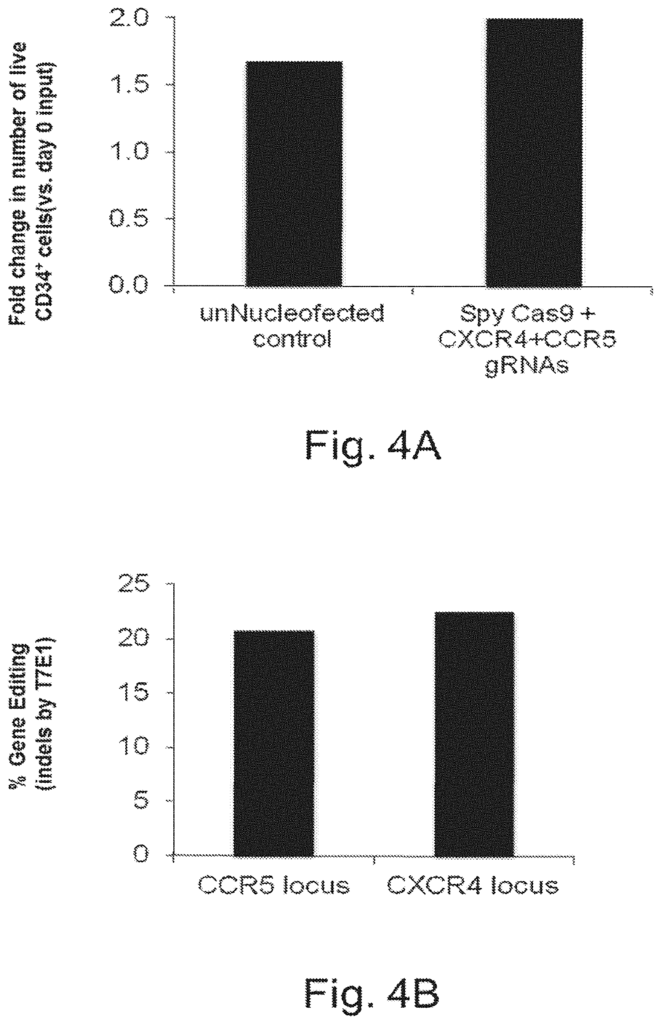
Click here to view the patent on Google Patents.
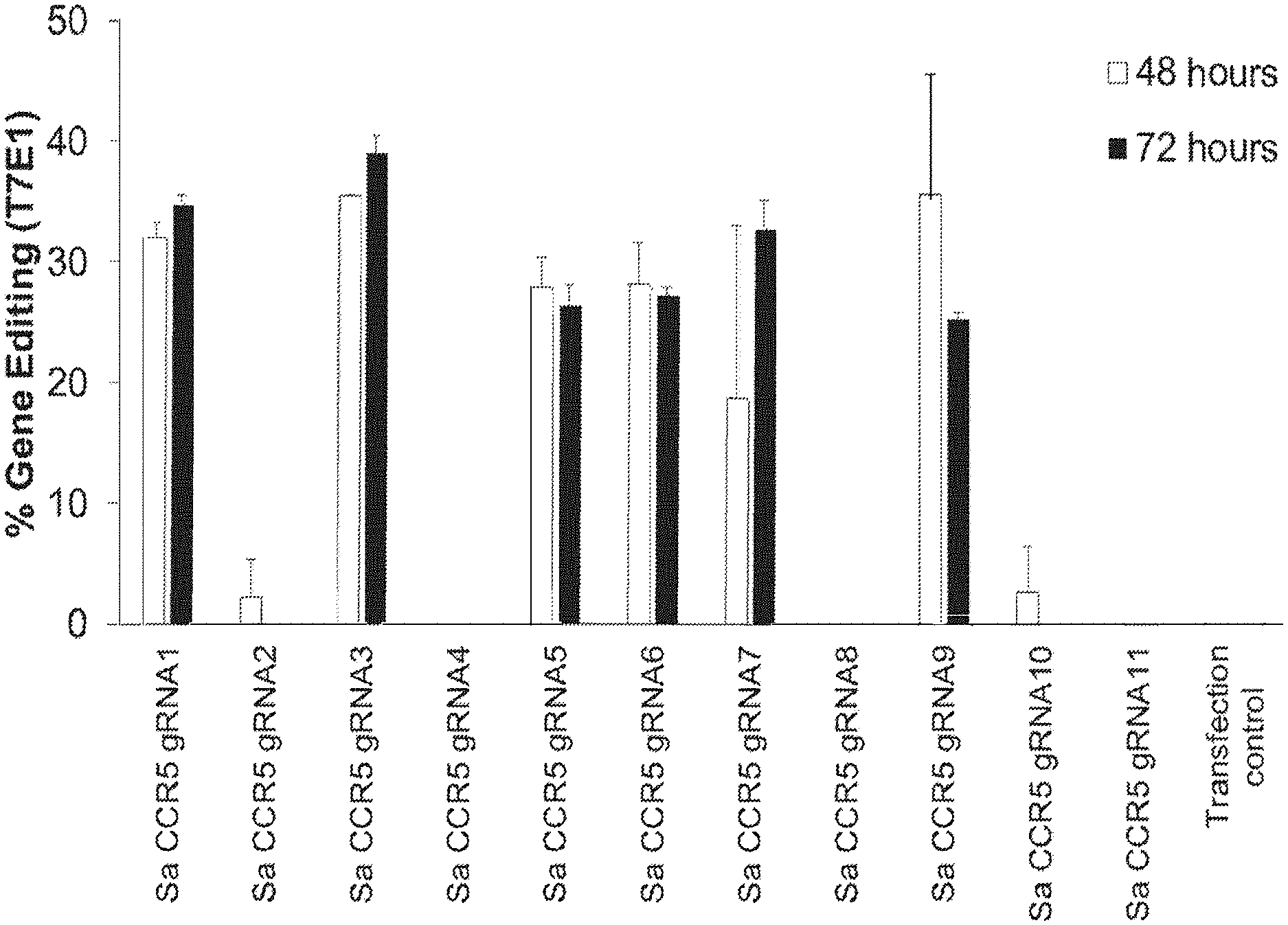
Leave a Reply